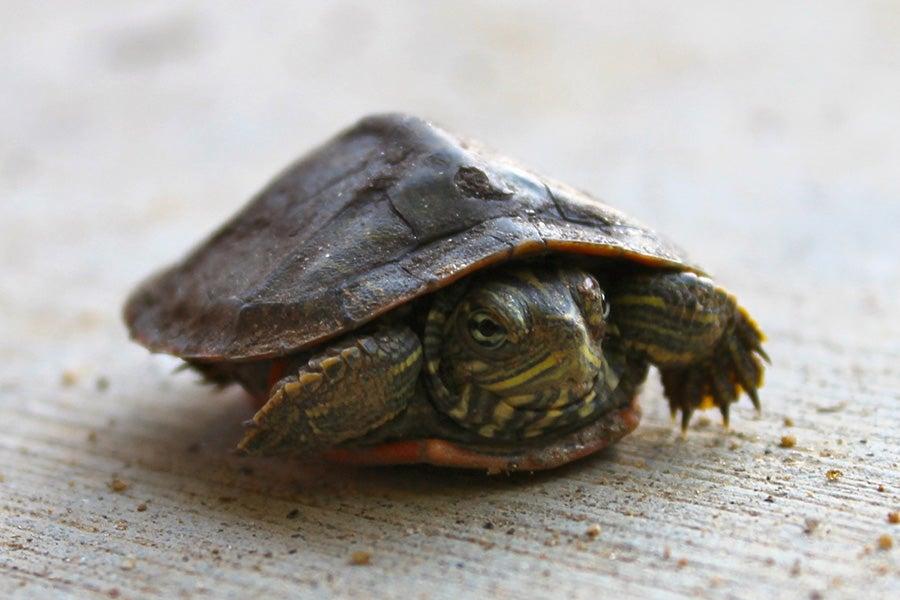Red-eared slider turtle
Prevention: Help prevent the establishment of Red eared slider turtles in the Sunshine Coast.
Red-eared sliders are native to the Mississippi Valley in the southern United States. Sliders can reach sexual maturity by 2 years of age and females can still produce viable eggs 5 years after mating. Females can lay up to 3 clutches (75 eggs) each season, more than twice the amount our native turtles can.
Red-eared slider turtle (Trachemys scripta elegans) is a restricted invasive animal under the Biosecurity Act. It is listed as a prevention species in our Biosecurity Plan. These species are not currently found on the Sunshine Coast. If these species became established, they could result in significant impacts. It is important for land managers to prevent the entry and establishment of these species. In Queensland, red-eared slider turtles must not be kept, moved, fed, given away, sold, or released into the environment without a permit.
Description
- One distinctive red or orange stripe behind each eye
- Narrow pale yellow stripes on head and legs
- Grows up to 30cm long
- Can retract its head directly back into shell
Where they live
Red eared slider turtles prefer still or slow-moving freshwater ponds or lakes. They can live in artificial ponds such as city parks or human-made canals. They often thrive in waters that are polluted with excessive organic matter.
Problems caused by red eared slider turtles
- Out-compete native turtles (mature earlier, more aggressive and produce more offspring)
- Prey on native animals (rare amphibians and water bird eggs)
- Out-compete water birds (take over nesting sites for use of basking areas)
- Spread of diseases and parasites to native species and humans (salmonellosis)
Protecting against red eared slider turtles
Under the Biosecurity Act, all Queenslanders have a general biosecurity obligation (GBO). This GBO requires everyone to manage biosecurity risks under their control.
Reasonable and practical measures to achieve each management objective are detailed in our plan.
To learn about managing Red eared slider turtles visit Biosecurity QLD website.
More information
Similar species
There are seven species/sub-species of native freshwater turtles found in our region including:
- Elusor macrurus - Mary River Turtle, critically endangered (occurs only in the Mary River Catchment in south-east Queensland.
- Chelodina longicollis - eastern long-necked turtle or stinker, as it emits an offensive smell when disturbed (occurs in eastern Australia from northern Queensland to southern Australia).
- Myuchelys latisternum - saw-shelled turtle (occurs in Cape York to northern New South Wales).
- Emydura macquarii macquarii - Murray River turtle (occurs in south-eastern Australia from Nepean River, New South Wales, to Pine Rivers, southern Queensland).
Native turtle species are protected under the Nature Conservation Act 1992.
Report red-eared slider turtles to Biosecurity Queensland within 24 hours.

